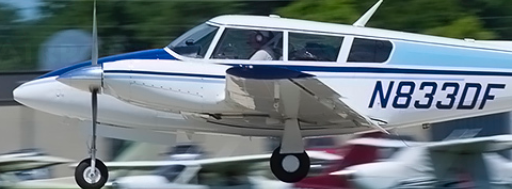Autopilot Repair: Lancaster Avionics did it again. I suggested that we fix the issue the previous crew had been experiencing with the YAW Damper on the autopilot. That problem had actually gotten more complicated since I began flying the Cheyenne.
When you engage the autopilot, the YAW Damper starts up automatically and its’ broken! Turning off just the YAW Damper was getting increasingly difficult, which would eventually mean we couldn’t use the autopilot at all. I flew the Cheyenne up to Lancaster Avionics, and Mr. Jim Good, to ask that they evaluate the system. I told him that I’d be happy if he could just disable the yaw damper entirely, and allow me to use the rest of the autopilot unmolested.
On March 17th, Jeff and I flew up to meet Jim and spend the day with the airplane as they looked it over. Our goals were to diagnose the system and make a recommendation for repair. I asked them to evaluate disabling the YAW Damper in the interim, and also to discuss with me why the autopilot didn’t seem to want to follow the missed approach procedure on the go. I thought the later was due to my process, and the negative transference from my own old autopilot.
Blown away by results: We were there until about 2pm when Jim came in with the results. The YAW Damper servo was in fact only working in one direction, and he removed and repaired that servo. We didn’t need to send anything out – so that exceeded our expectations by a long shot. Next up he looked into why I had trouble turning off the YAW Damper from the control panel. He found an internal plastic part had failed, and he just so happened to have one that was removed from another airplane. Our control panel is 100% functional once again!
With the autopilot fully functional now – and I mean all of it works and works well, I spend a few minutes talking with Jim about what I might be doing wrong on the missed approach. Mind you, the previous crew didn’t practice missed approaches on automation at all. I had nothing to go on there. Jim, Jeff, and I came up with a plan to test specific display settings and buttonology that should make this work. We left with a plan.
Software Updates: While Jim was in there, he took the time to check software status on all three nav/comms and both transponders. Some were seriously out of date for their operating systems. It was very cool that he took the time to do this.
One problem couldn’t be resolved in time for an update. The lower data slot in the G600 Txi wouldn’t hold a card in, and he needs both slots to update the unit. I thought I knew right away what caused this. One of the new datacards I’d ordered had it’s sticky label unravel in the unit. That transferred some of the glue to the guard rails inside the slot, so both slots were less responsive to inserting, holding, and extracting the cards.
Jeff and I resolve this by cleaning the card with the torn sticker carefully. No more sticky. Next we put a light coating of dry lubricant on the plastic side of the card and worked that in and out of both slots. That removed the stickiness and now the cards go in, lock, and eject properly. I’ll go back up for update the G600Txi very shortly.
The next update will cover a trip to Atlanta on the 27th – with a fully functional autopilot.
Fly Safe!
Frank

